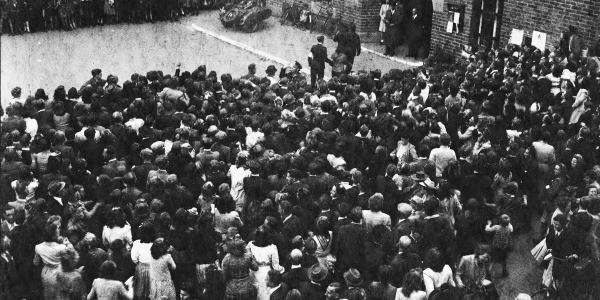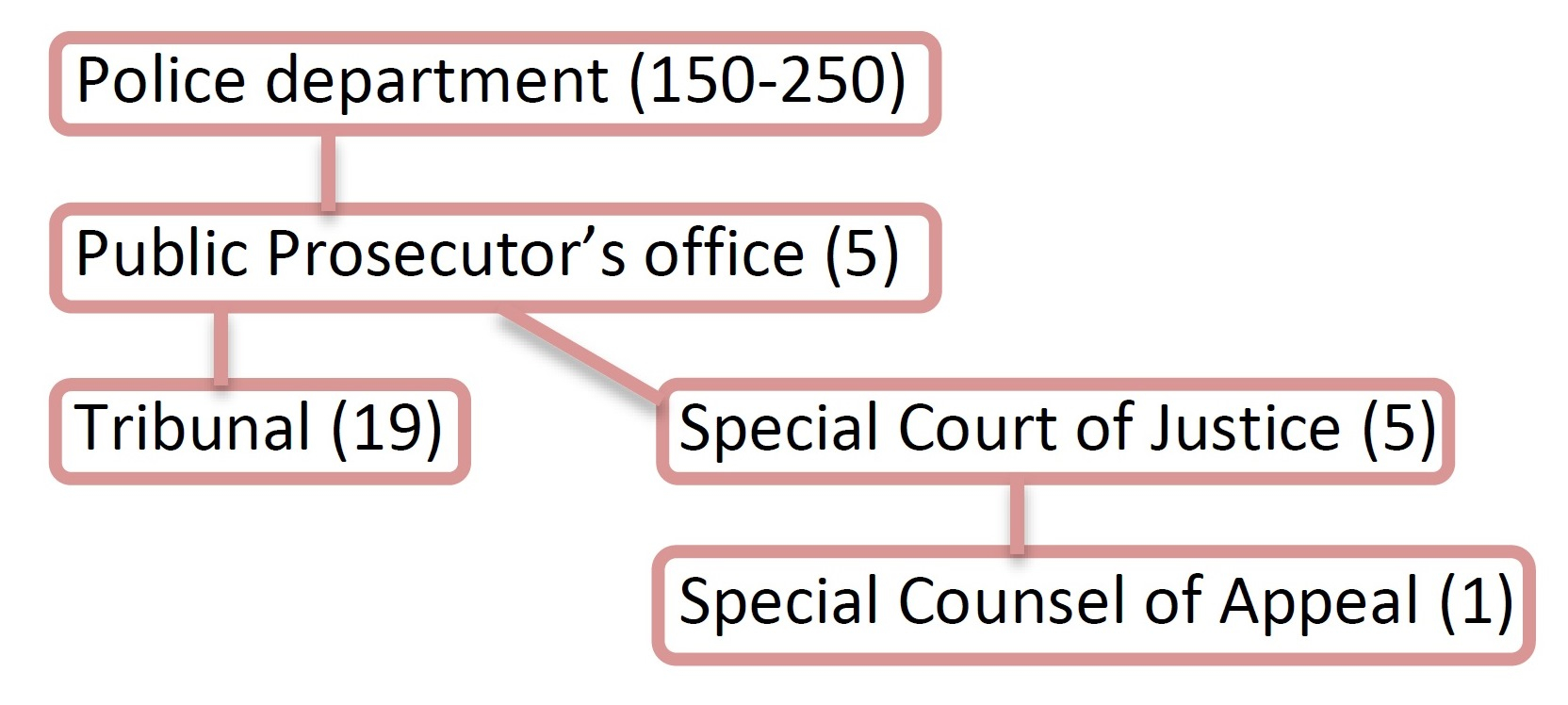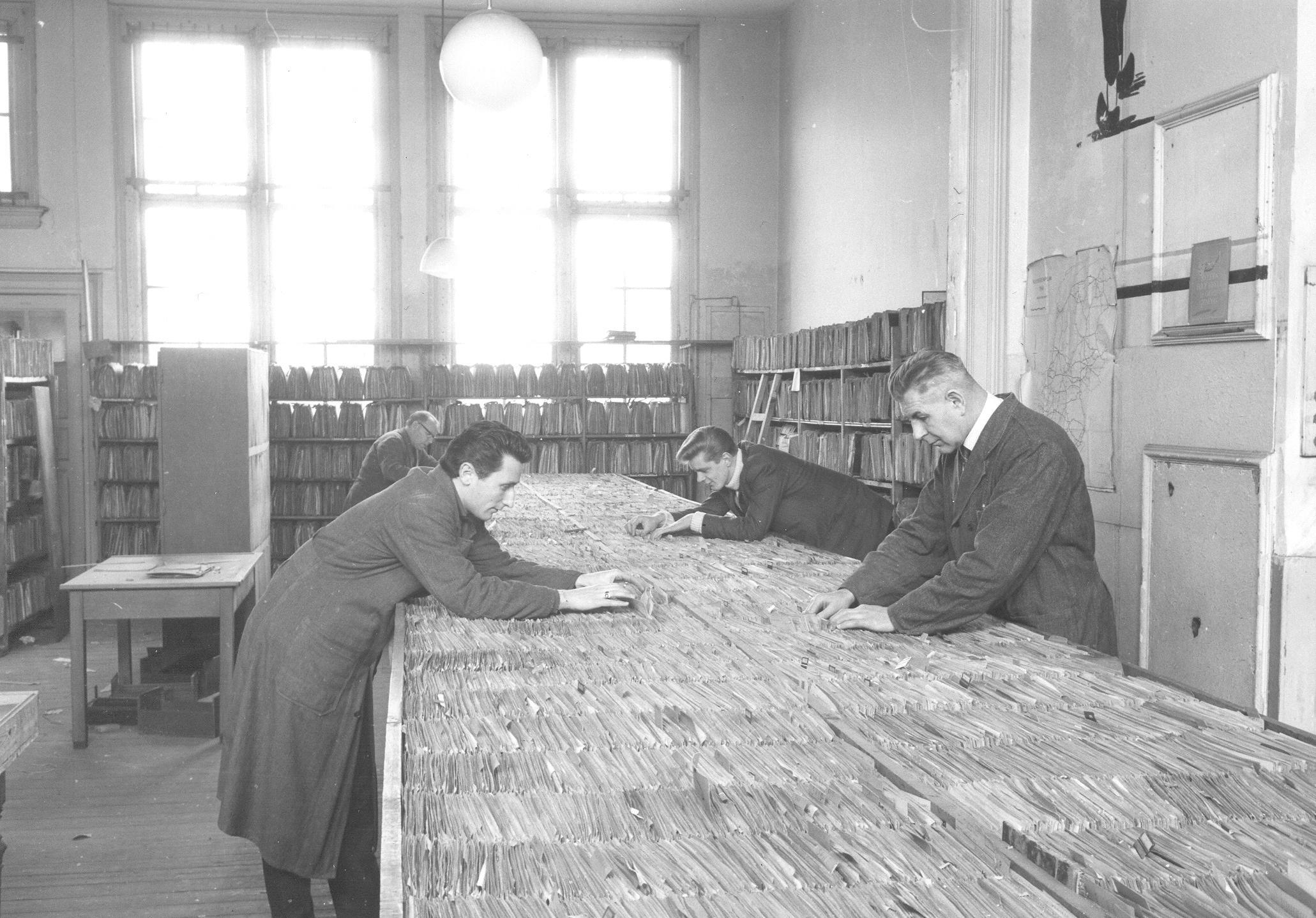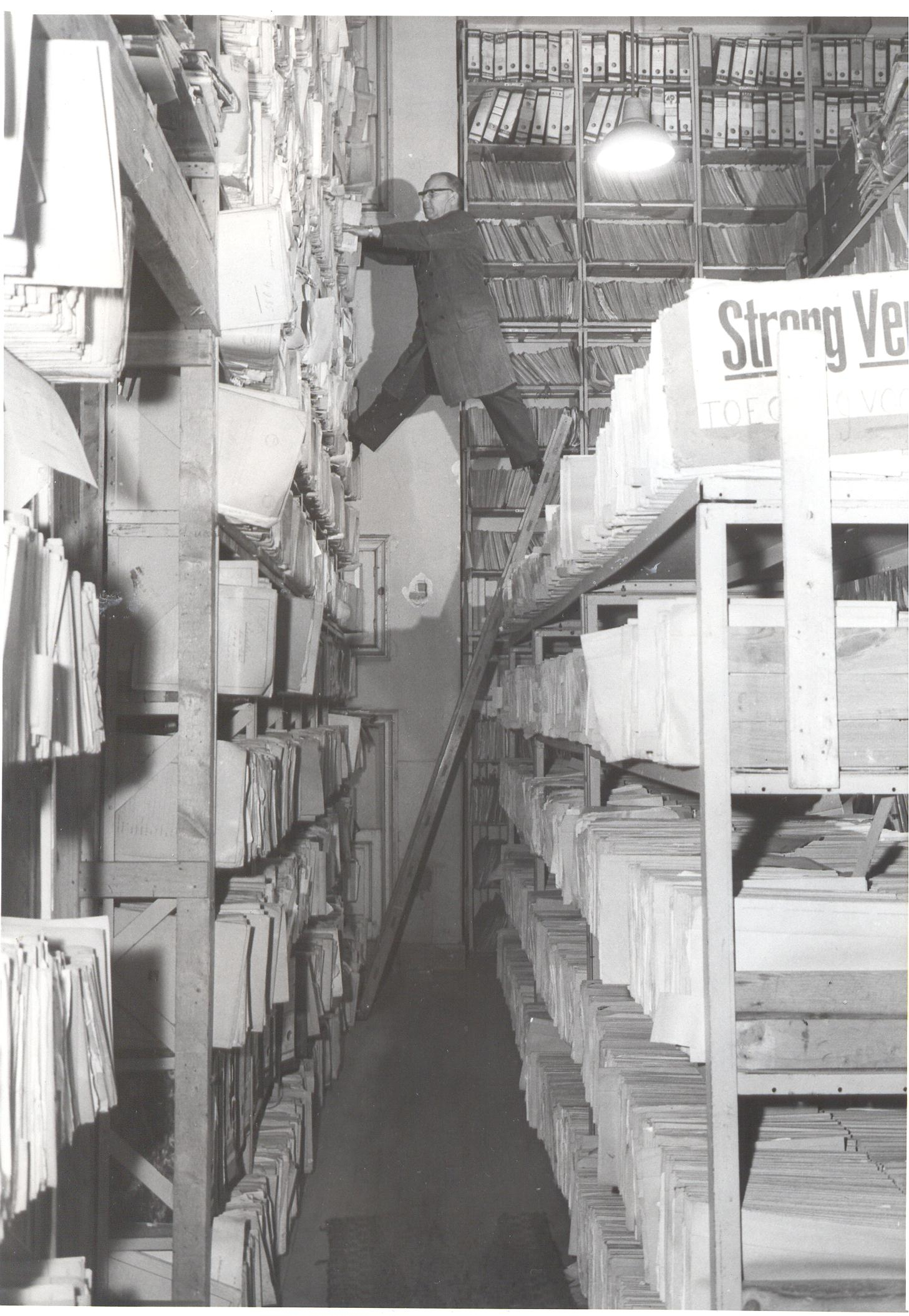
The Central Archive of Special Jurisdiction: A short history
Author: Anne Gorter (Dutch National Archives)
Judicial Basis
During the Second World War the Dutch government fled to England. In London they received information about what was going on in the Netherlands. In the first couple of years of the war it became clear thousands of Dutch citizens were suspected of collaborating with the Germans. The government was afraid these citizens would be convicted after the war not by courts, but by other citizens. They were afraid people would take matters in their own hands.
The government wanted to prevent this from happening. Current legislation however did not suffice in the prosecutions of these types of crimes. Furthermore, too many people were suspected of collaboration for the regular system to investigate and prosecute. In 1943 and 1944 different laws were therefore accepted such as the Besluit Buitengewoon Strafrecht, Besluit op de Bijzondere Gerechtshoven, Besluit Buitengewone Rechtspleging and Tribunaalbesluit. They form the basis of the special jurisdiction (bijzondere rechtspleging). They state how the special jurisdiction would take form, who would be responsible for what and what people could be convicted of beside regular criminal law.
Institutions
As a consequence new institutions to investigate and prosecute collaborators were established. First of all new police departments were formed: The politieke opsporingdiensten which were later called politieke recherche afdelingen. These police departments collected evidence against suspects such as witness statements, letters, pictures or membership cards of national socialist institutions. It is unclear how many of these police departments have existed as several were combined throughout the years. Estimates vary from 150 to 250.
For the prosecution special public prosecutors were instated: The so called procureur-fiscaal. Special courts were also formed: 19 Tribunals for cases such as membership of the National Socialist Party, and 5 special courts of justice (bijzonder gerechtshof) for crimes as the betrayal of Jews to the Germans. After a verdict of a special court of justice an appeal could be made for which the special court of appeal (bijzondere raad van cassatie) was established.
One file per person
All these institutions formed files which were send from one institution to another. The police departments started a file on a suspect. If not enough evidence was found to prosecute the file would remain at the department. If there was enough evidence they would send the file to a public prosecutor.
A public prosecutor could then decide one of three things. He could decide to release someone under certain conditions. In these cases the file would remain at the public prosecutor’s office. He could also decide to send a file to a tribunal or special court of justice. In these cases the file would remain at the court or tribunal if someone was actually convicted. If not, the file was send back to the public prosecutor’s office.
After a verdict of the special court of justice an appeal could be made at the special court of appeal. The file would either remain at the special court of appeal after a verdict or would be send back to a special court of justice.


The idea was in the end only one file per person would remain. In reality this did not happen. Especially police departments kept so called 'schaduwdossiers'. These do not only consist of copies, but also of material they did not send to a public prosecutor. In the end it is possible ten files remain on one specific person since someone could be investigated by multiple police departments and be prosecuted for multiple crimes. A file can however be a large pile of documents and evidence material, but it can also just be just one piece of paper.


The central archive of special jurisdiction
By the end of the 1940’s hundreds of thousands of files were spread throughout the country at different institutions. The government was afraid the files might be misused and decided to centralize them in The Hague. The Central Archive of Special Jurisdiction was born.
Kilometres of files, registers, lists, reports and card systems were crammed together. The card systems gave access to the files. The difficulty was that every institution had made their own card system. Meaning there were at least 150 card systems to look through when you were looking up files on a specific person. That is why it was decided to combine all those separate systems to one central card system.
Even though the central card system made sure files were found more easily it still took a lot of time. In the following decades a lot of plans were made to make the archive better accessible. They first started combining all files on a specific person together. After only 70 meters of archive this turned out to be too expensive. They then decided to inventory every file separately. Every file got a unique inventory number and basic information on who the file was about was put in a database. As you might guess, this turned out to be too expensive as well. All files of the courts and a couple of police departments, around 800 meters in total, were inventoried this way.
All of this was not done for the rest of the archive. As the archive covers about 4 kilometres in total this is the most part. For the remaining kilometres they combined multiple files in one inventory number. They did not describe any information concerning the files in a database. The only way to find those files, was trough the central card system.


The National Archives
In 2000 the archive was transferred to the National Archives which made its existence known to a wider public. The archive however was and still is not fully public due to the fact that it contains a lot of privacy sensitive information. Access can only be granted when the person the file concerns is deceased, grants access or on the basis of scientific research. The number of requests for access quickly started to rice after the archive was transferred. At this point about 3500 requests are made each year, ranging from access to one person’s file to hundreds, and the number of requests is still ricing.
Looking up the files on a person took a lot of time at the beginning. For the most part this was due to the central card system. This was not organized alphabetically, but phonetically, by sound. So Klijn can also possibly be found at Klein, Kleijn or Kleyn. Looking up all relevant cards therefore took a lot of time and mistakes were easily made. That is why the card system was fully digitized in 2010 and data-entry provided us with general information on the persons on all the cards. Both the scans and data-entry were put in a database. This database was later combined with the database that had already been made before the transfer.
Even though a lot of effort has been made in the last decades, research still is not easy. The card system might have been digitized, researchers still need to look for the files that are marked on a card. In the end not all cards lead to a file and not of all files cards are available. Furthermore, the card system only provides access on the basis of the name of the suspect. There is no other access to the archive on the basis of names of witnesses or victims. Basically, it still isn’t sufficiently accessible.
The future?
In future research might be a lot easier. We might be able to digitize the archive in full and complete the current database. Optical Character Recognition might be used to make the archive machine readable after which Named Entity Recognition could locate names, places and dates. Automatic classification of documents techniques might even make it possible to find specific documents such as verdicts with just one click. We do however need to find a way to use these new techniques in a way no privacy laws are violated.
Nonetheless, new techniques will make new types of research possible in an archive that contains enormous amounts of information on people during a time of war. Not only on people who were suspected of collaboration, but also on victims, police officers, judges, witnesses and so much more.



